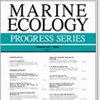腹足类的适口性:对腹足类捕食效应的荟萃分析
IF 2.1
3区 环境科学与生态学
Q2 ECOLOGY
引用次数: 0
摘要
ABSTRACT: 腹足类是海洋无梗动物,已进化出许多减少捕食的策略。以前用 ascidian 组织或颗粒进行的操纵性实验表明,它们具有化学防御功能,使其变得难吃。然而,群落规模的捕食排斥实验表明,当腹足类暴露在捕食者面前时,它们几乎完全被吃掉。基于这些截然不同的结果,我们进行了一项荟萃分析,以评估研究地点、实验设计、 ascidian 的群落性和捕食者身份对 ascidian 防御效果的重要性。我们的研究是对腹足类捕食的首次定量综述,它强调了生态相互作用的重要性,而不仅仅是生物的特定防御策略。我们发现,多种因素会干扰腹足类防御的有效性。适口性研究显示了腹足类防御机制的证据;然而,这些机制取决于捕食者的身份(如鱼类、蟹类、片脚类动物)。我们在群落研究中没有发现腹足类防御的证据。缺乏主要针对独居腹足类的实地实验来评估它们在群落中的捕食风险。对腹足类防御机制的研究也偏重于北半球的温带地区。人们普遍认为,腹足类具有主动防御能力的说法可能被高估了,而确实存在的防御能力可能只局限于少数物种。造成这种误解的主要原因是研究方法和地理位置的偏差,导致只对以前有防御证据的物种进行测试。因此,我们需要在全球范围内开展更多的研究,重点关注腹足类与捕食者之间的生态关系,特别是在野外条件下的自然群落中。本文章由计算机程序翻译,如有差异,请以英文原文为准。
Palatability of ascidians: a meta-analysis of the predation effect on ascidians
ABSTRACT: Ascidians are marine sessile animals that have evolved many strategies to reduce predation. Previous manipulative experiments with ascidian tissues or pellets have shown that they have chemical defenses that render them unpalatable. However, predation-exclusion experiments on a community scale have shown that ascidians are almost entirely eaten when exposed to predators. Based on these contrasting results, we performed a meta-analysis to assess the importance of study site, experiment design, ascidian sociability, and predator identity to the efficacy of the ascidian defense. Our study is the first quantitative review of predation on ascidians, and it emphasizes the importance of ecological interactions beyond the specific defense tactics of the organisms. We found that multiple factors can interfere with the effectiveness of the ascidian defense. Palatability studies have shown evidence for ascidian defense mechanisms; however, they depend on the identity of the predators (e.g. fish, crab, amphipod). We did not find evidence of ascidian defense in community studies. There is a lack of field experiments, mainly on solitary ascidians, that evaluate their predation risk in communities. Research on ascidian defense mechanisms is also geographically biased toward the temperate region in the Northern Hemisphere. The commonly held belief that ascidians possess active defenses may be overestimated, and the defenses that do exist are probably restricted to only a few species. This misconception has been caused mainly by methodological and geographical bias that has resulted in tests being performed only on species with previous evidence of defenses. Therefore, we need more worldwide studies focusing on the ecological relationships between ascidians and predators, specifically in natural communities under field conditions.
求助全文
通过发布文献求助,成功后即可免费获取论文全文。
去求助
来源期刊

Marine Ecology Progress Series
环境科学-海洋学
CiteScore
5.30
自引率
8.00%
发文量
238
审稿时长
3 months
期刊介绍:
The leading journal in its field, MEPS covers all aspects of marine ecology, fundamental and applied. Topics covered include microbiology, botany, zoology, ecosystem research, biological oceanography, ecological aspects of fisheries and aquaculture, pollution, environmental protection, conservation, and resource management.
 求助内容:
求助内容: 应助结果提醒方式:
应助结果提醒方式:


